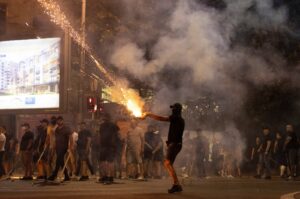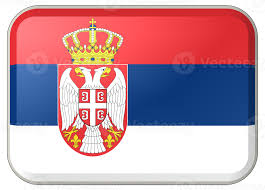Serbia is currently engulfed in escalating anti-government protests that have taken a violent turn after months of largely peaceful demonstrations. Triggered by a disastrous railway station roof collapse in Novi Sad last November that killed 16 people amid widespread allegations of government corruption, the movement has grown into one of the most significant uprisings against the long-ruling administration of President Aleksandar Vučić.
In recent days, tensions erupted into street clashes in multiple cities, including the capital Belgrade and Serbia’s second-largest city, Novi Sad. Anti-government protesters, many of them students and anti-corruption activists, have targeted government buildings, including the offices of the ruling Serbian Progressive Party (SNS). Some protesters vandalized these headquarters by breaking windows, discarding furniture, and painting graffiti, chanting slogans such as “He’s gone” to express their desire for Vučić’s resignation.
The response from law enforcement has been forceful. Riot police, outnumbering protesters in some instances, deployed tear gas and made dozens of arrests to disperse demonstrators and prevent them from reaching sensitive government sites. Several police officers were reported injured in the clashes, along with protesters. Authorities accuse protesters of provoking violence and describe the unrest as an “attack on the state.” President Vučić and his government have condemned the protests as fueled by foreign interference and have taken a hardline stance, calling for stronger crackdowns against demonstrators.

This surge of protests and violent encounters follows nearly nine months of continuous pressure on Vučić’s administration, which critics accuse of entrenched corruption, authoritarian tendencies, and curtailing media freedoms. The collapse of the Novi Sad station roof became a potent symbol of government negligence and corruption, sparking widespread public anger.
International observers and human rights groups have expressed concern about the use of excessive force by police and the growing political repression. The EU, which is monitoring Serbia’s candidacy for membership, has emphasized the importance of protecting free expression and peaceful assembly. Meanwhile, protesters demand early elections to break the cycle of perceived impunity and demand accountability.
Serbia now finds itself at a critical juncture. The demonstrations signify broad frustration with governance and governance failures, and the government’s repressive tactics risk deepening divisions. The unfolding unrest highlights the challenge of navigating Serbia’s democratic future amid longstanding political tensions and societal demands for justice.
The political landscape remains volatile as the government braces for more protests, with the potential for further confrontations between law enforcement and citizens pressing for change.
More than news- Its Icegate

